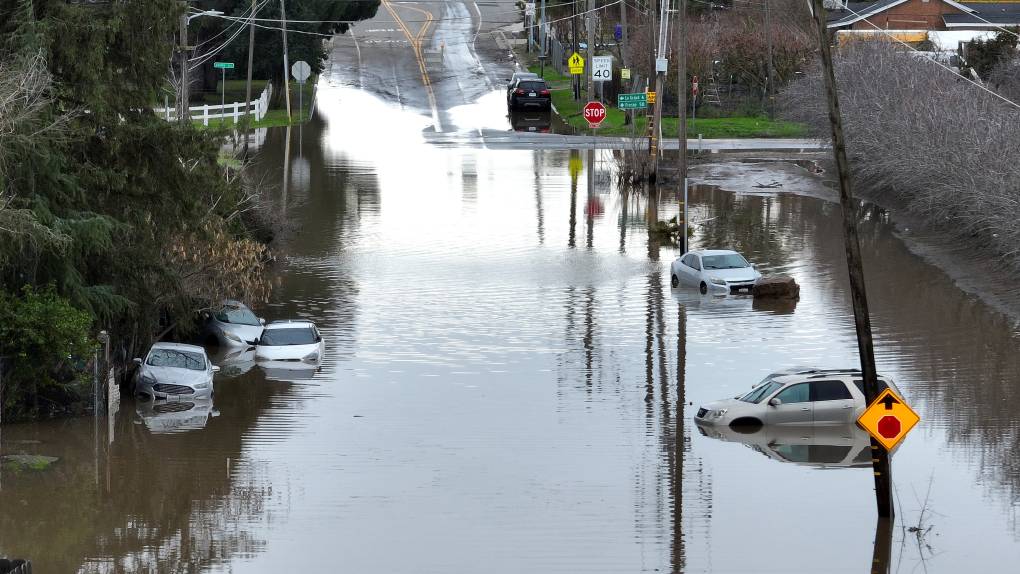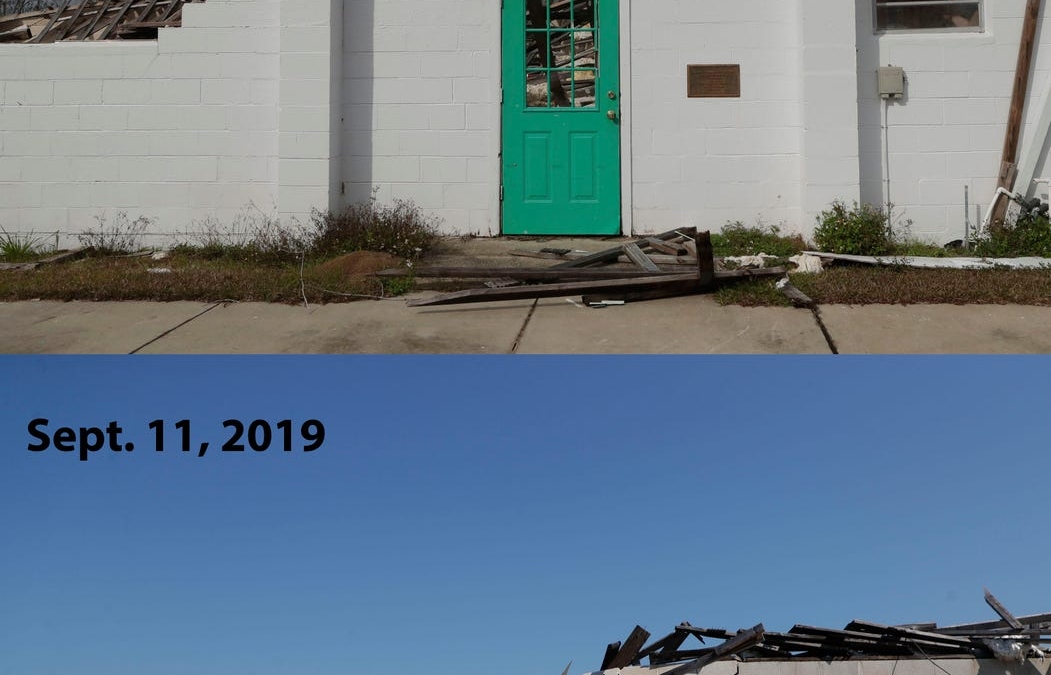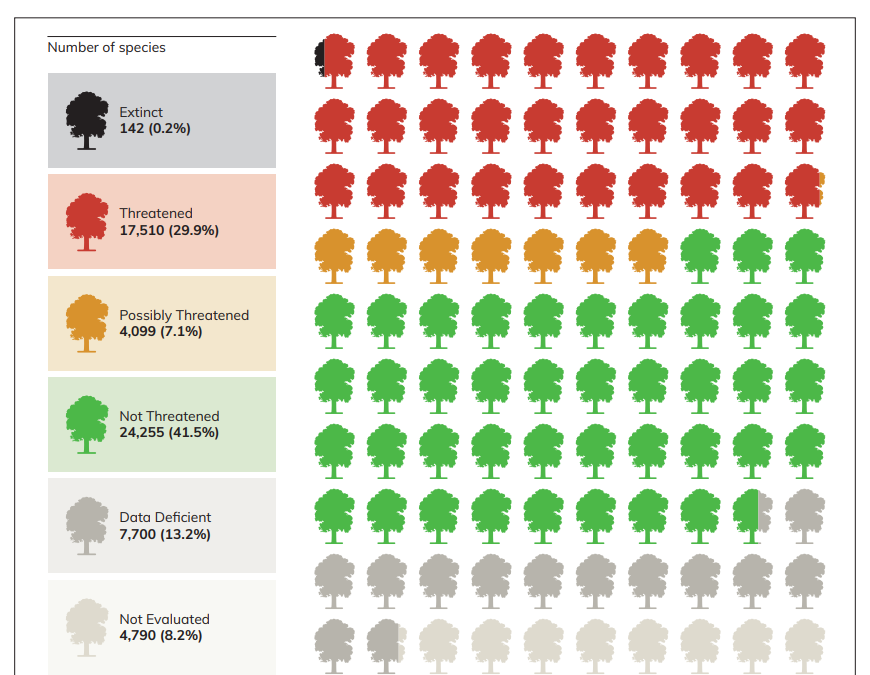“A town of Hispanics left in the dark”: Rural California town of Planada flooded, now forgotten – “We are traumatized and scared. What is the county going to do to take care of its rural communities?”

By Jessica Garrison
14 February 2023
PLANADA, California (Los Angeles Times) – Once the levee broke, the water rose so quickly that in the few minutes it took Erica Lopez Bedolla to decide to evacuate and gather her children and a few necessities, it had surged from her ankles to her knees.
What followed that night in early January was the stuff of nightmares: a fearful scramble through pelting rain; a flooded car engine that stopped cold; a frantic escape on foot through dark, brackish water. Then, days later, more misfortune: Not only was her house flooded, but so was her mother-in-law’s, and her mother’s, and her brother’s.
Not to mention that Bedolla’s home was one of about 40 in the town of Planada whose valuables were stolen in the aftermath of the evacuation.
So it took a few days for Bedolla to focus on the issue now consuming many in this tightknit, impoverished community of 4,000 tucked at the base of the foothills below Yosemite National Park: What will happen to Planada?
Most of the town was inundated. About half the homes were damaged and so was the elementary school. Many homes were destroyed. Most residents do not have savings to fall back upon, let alone flood insurance. Many residents are farmworkers in the U.S. illegally, making it more difficult to qualify for federal disaster funds.
The challenges are daunting: How will people rebuild? Will a significant slice of the population wind up permanently displaced? How should the county, state and federal governments help?
Bedolla and her family spent a few days at her sister-in-law’s in Merced, then relocated to temporary shelter at Felix Torres Housing, a housing project for migrant farmworker families run by Merced County. But they — and the dozens of other Planada families offered units there — could stay several weeks. No one thought it would be enough time to repair all the damaged homes, if they could be repaired at all.
Bedolla stood in the living room of the utilitarian unit a week after the flood, looking at the sparse furniture and the displaced children playing soccer outside beneath the setting sun.
“What are we going to do now?” she asked, talking about her family and her town.

Earlier this month, at a community meeting at Planada’s Cesar E. Chavez Middle School, residents took turns asking a version of this question over three angry hours, also blasting government officials for the failure to issue timely evacuation orders and the slow pace of relief efforts.
They pointed out that Planada is currently without mail service and healthcare services. Its charming streets are filled with moldy detritus.
Some accused the Merced Irrigation District of negligence in failing to maintain the levee and keep brush out of Miles Creek, which burst its clogged banks on the night of Jan. 9. Some even suggested officials may have flooded the town intentionally, calculating that if they sent the water toward Planada it would spare other places.
About an hour into the meeting, Anjian Aguilar, 13, stepped up to the microphone.
“Will this city finally get the care it needs?” she demanded. The town, she said, has “no storm drains, no streetlights. We are literally a town of Hispanics left in the dark. Look around. You have a community that is angry.”
She said her family had fled their rented home as water began to rise. They are now staying at Felix Torres while her parents rebuild the rental. Their landlord doesn’t want to do it.
“We are traumatized and scared,” another woman added. “What is the county going to do to take care of its rural communities?”
At a long table in front of residents, government officials — from the county, the Federal Emergency Management Agency and the Governor’s Office of Emergency Services, among others — listened and tried to offer solutions to individual bureaucratic problems.
But to the larger questions facing the town’s future, they acknowledged the answers were more difficult.
County Supervisor Rodrigo Espinosa said there was a housing shortage “before the floods, and now it’s worse.” He added that he is frustrated that county and state officials are not responding with enough urgency to either the housing crisis or the infrastructure problems.
“It’s been awful,” he told the crowd. […]

No one was prepared for what happened that terrible Monday five weeks ago.
Miles Creek, which runs southeast of the town, burst its banks and busted through the levees designed to contain it. Many residents said they didn’t get any order to evacuate until the sheriff came door to door, and by then it was almost too late.
People watched in shock and horror as water flooded into their homes, and when they tried to flee in their cars, they were swamped and had to be rescued.
It was a miracle, people in town said over and over, that no one died.
The next morning, Alex Martinez, who grew up in Planada but now lives in Merced, rushed over in his truck to help with the evacuation. He flew a drone camera over block after block of homes that appeared to be floating in a lake of brown water. […]
Many in her community say they will be forced to move away. But Bedolla can’t imagine leaving her beloved town.
“It was so quick,” she said of the speed with which the water came in and flooded it all. And after a flurry of attention from the outside world, she said, it felt as if everyone had “forgotten this happened.” [more]
‘A town of Hispanics left in the dark’: Planada flooded, now forgotten


